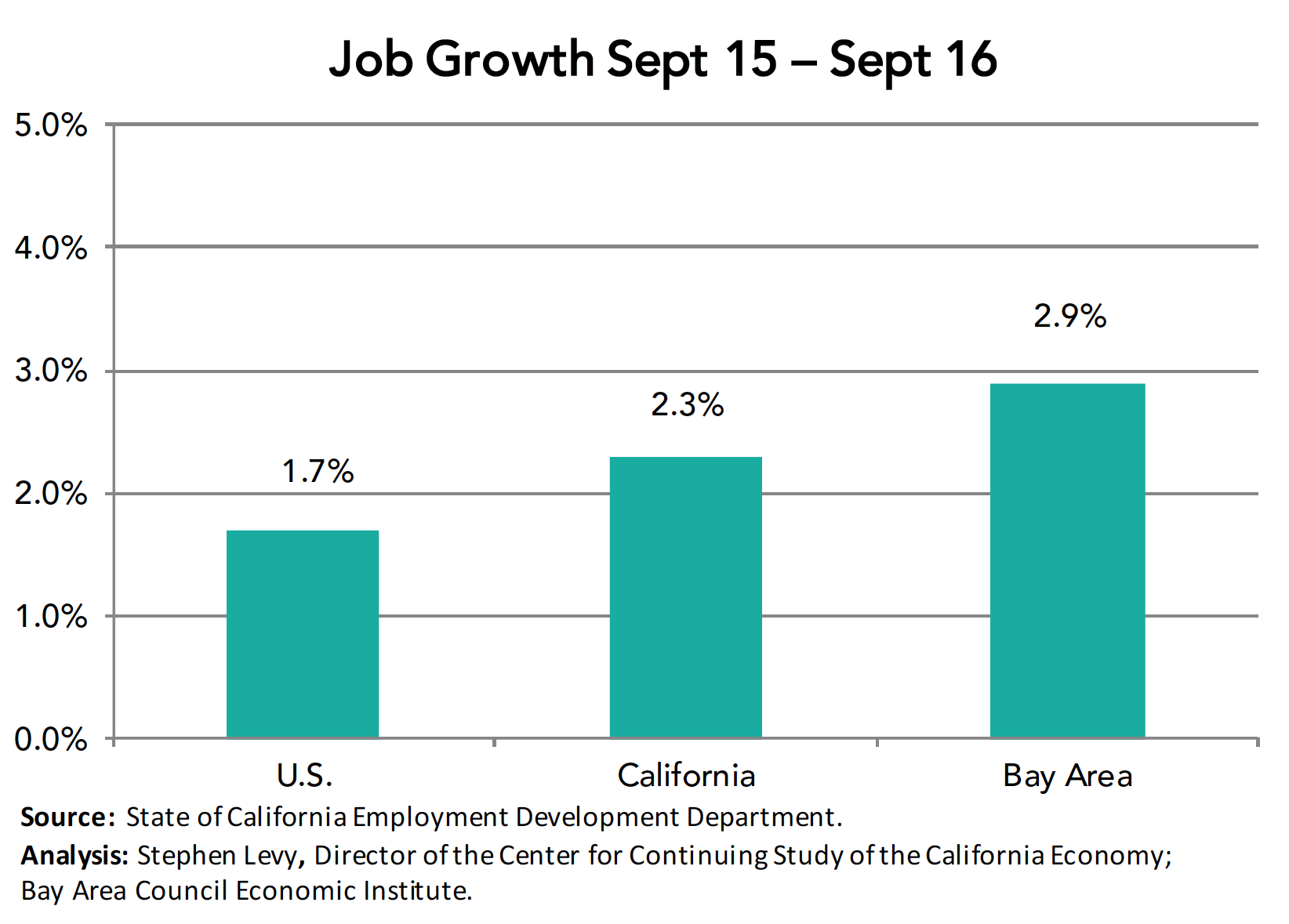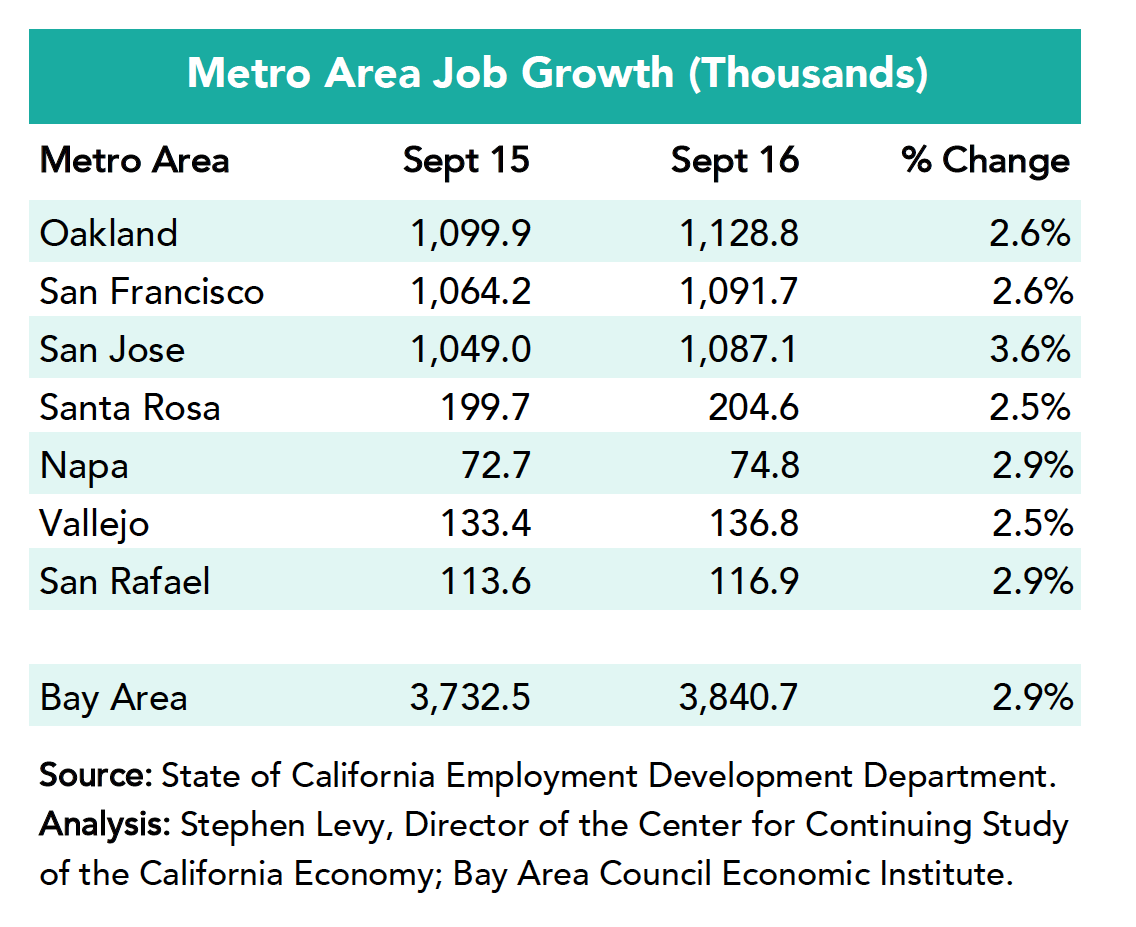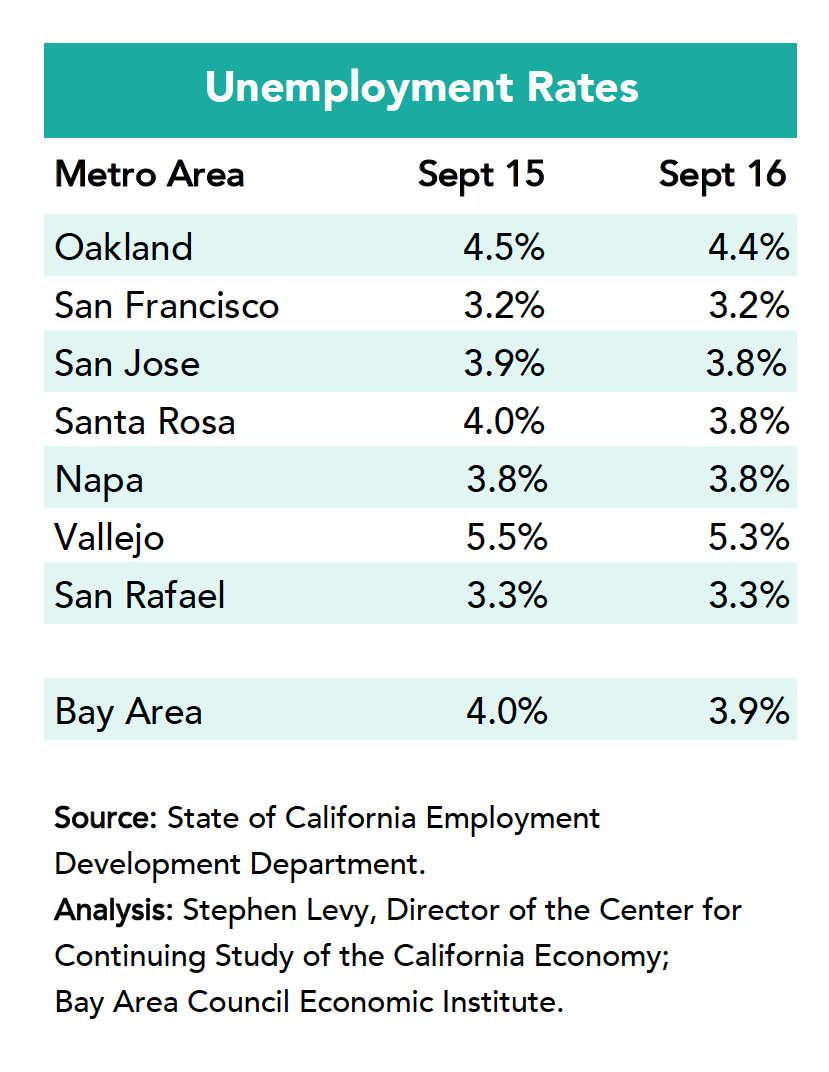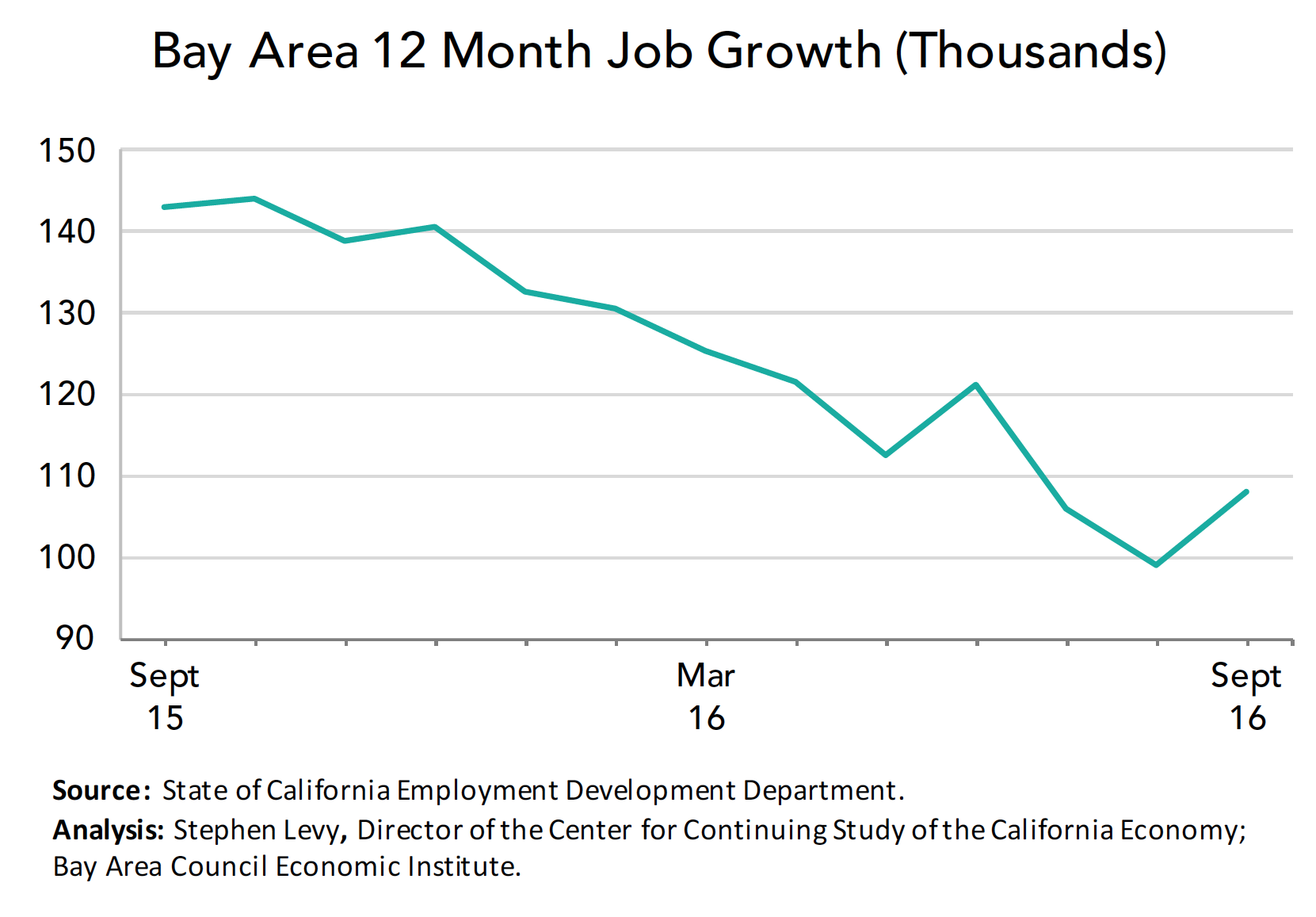
The California Employment Development Department (EDD) has released job and labor force estimates for September 2016. Here are the highlights:
Possibly the most impressive statistic in the September report is the continuing strong increase in the region’s labor force. In the past 12 months 123.800 workers have joined the labor force (+3.0%) far outpacing the 1.0% population increase. While monthly labor force participation rate estimates are not available for the region, it must be true from these numbers that the region’s force participation rate has jumped while baby boomer retirements continue to put downward pressure on labor force growth.
This means that economic growth is reaching more people in the region and that is good news. Not everyone is fully participating but the trend is positive and unemployment rates remain low despite fast labor force growth.
Year Over year Growth Increased in September
The region added 108,100 jobs between September 2015 and 2016 for a gain of 2.9% compared to 1.7% for the nation and 2.3% for California. The pace of growth has slowed from the mid-summer 2015 highs although year over year gains remain robust.
Year over year job growth picked up a bit in September as discussed above and remains far above the national average in all metro areas.

The job gains continue to reduce unemployment rates (more slowly in September) while the labor force continues to add workers although the region is now at or close to full employment.

While year over year job gains have declined slightly from mid-2015 peaks, they remain in very healthy territory with no signs of a significant loss of competitive advantage. Job growth rates in 2016 are likely to be the peak going forward as baby boomer retirements are slowing labor force growth.

The continuing job growth now that unemployment rates have fallen will bring new residents to the region as will the growing need to replace retiring workers.
All of these trends underscore the importance of policies to increase housing and make sure that housing and transportation challenges do not undermine the region’s still vibrant economic competitiveness. Bay Area residents will have many opportunities at the ballot in November to support investments in transportation and housing for low income and vulnerable residents.